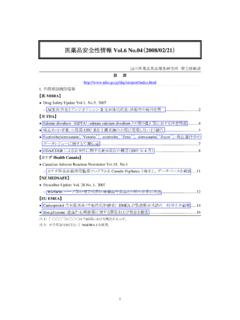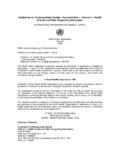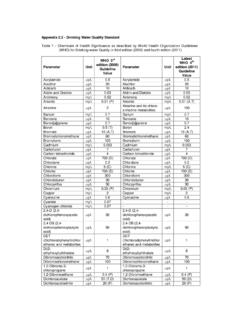Transcription of EMOLLIENTS - Wandsworth CCG
1 *Acknowledgement: Nicola Watts, Medicines Information Pharmacist, Wessex Drug & Medicines Information Centre, prepared for National Eczema Week 18th 25th September 2010, August 2010. Prepared by Louise Maunick, GP Prescribing Support Pharmacist, November 2012 Approved at CEMMaG 12 December 2012 EMOLLIENTS There is good evidence to show that effective emollient therapy can reduce the need for steroid use by 75%. The following should be considered in order to optimise emollient therapy; EMOLLIENTS should be applied as frequently as possible at least three times daily and ideally four to six times a day (every three hours) and use continued even when skin condition is improved EMOLLIENTS should be applied gently in the direction of hair growth so that a visible sheen remains Apply EMOLLIENTS after bathing while water is still trapped in the skin to increase hydration Quantity: Appropriate application of emollient could be 500 - 1000 grams of emollient each week for an adult (half quantities for a child) There is no good evidence to recommend a particular emollient over another.
2 Choice is based largely on patient preference, site of application and extent and severity of condition therefore trial of cost effective emollient options should be used. Treatment should be initiated with a light emollient. EMOLLIENTS should be tried in order of greasiness (starting with the least greasy emollient) so that patient is provided with an emollient that is cosmetically acceptable to them and is greasy enough to control their skin condition. Avoid putting hands in large tubs, use a clean spatula to decant the emollient into a smaller clean container Antimicrobial products should be used as an adjunct to emollient therapy FOR SHORT TERM USE ONLY when there is evidence of high bacterial load.
3 There is limited evidence to support the use of urea containing products if required they can be used for dry, thickened skin for short term use in adjunct to emollient therapy. Types Lotions, creams and ointments: applied directly to the skin. Lotions (light preparations): more water, spread easily, absorb quickly, cooling, may be preferred for hairy areas, not very effective at moisturising the skin. Creams (medium preparations): mixture of water and fat and feel light and cool on the skin, well absorbed, generally acceptable preparation. All creams contain preservatives which people can become sensitive too. Ointments (oily preparations): greasy and occlusive hence sometimes not cosmetically acceptable, usually no preservatives, useful for very dry and thickened skin, not appropriate for weeping areas Soap substitutes: soap can dry the skin.
4 Soap substitutes are just as effective at cleansing the skin. Apply to dry or wet skin then wash off in shower or bath. May reduce need for other EMOLLIENTS . Bath and shower oils: bubble bath can be drying and irritant on the skin. A daily bath removes dirt and debris which could potentially lead to infection. Emollient bath and shower oils can be added to the bath water or directly to the skin in the shower. WARNING, can cause bath or shower to become slippery. *Acknowledgement: Nicola Watts, Medicines Information Pharmacist, Wessex Drug & Medicines Information Centre, prepared for National Eczema Week 18th 25th September 2010, August 2010.
5 Prepared by Louise Maunick, GP Prescribing Support Pharmacist, November 2012 Approved at CEMMaG 12 December 2012 Excipients Table: Excipients in topical preparations which may be associated with sensitisation Beeswax Benzyl alcohol Butylated hydroxyanisole Butylated hydroxytoluene Cetostearyl alcohol (including cetyl and stearyl alcohol) Chlorocresol Edetic acid (EDTA) Ethylenediamine Fragrances Hydroxybenzoates (parabens) Imidurea Isopropyl palmitate N-(3-Chloroallyl)hexaminium chloride (quaternium 15) Polysorbates Propylene glycol Sodium metabisulphite Sorbic acid Wool fat and related substances including lanolin(1) 1. Purified versions of wool fat have reduced the problem.
6 Wandsworth CCG preferred EMOLLIENTS offering a broad selection of cost effective options that should cater to the majority of patients Lotion (very light) Cream Ointment (greasy) Soap Substitute Bath/Shower Emollient (slippery) 1st E45 Lotion Aquamax (light) similar to other light EMOLLIENTS such as E45, Zeroaqs & Zerocream Emulsifying ointment ZeroAqs similar to Aqueous Cream Dermalo Bath emollient similar to Zerolatum & Oilatum 2nd QV Lotion Aquamol (creamy) Hydrous ointment Aquamax similar to other light EMOLLIENTS such as E45, Zeroaqs & Zerocream Hydromol bath & shower emollient 3rd Zerobase (rich cream) similar to Diprobase Zeroderm ointment similar to Epaderm or Hydromol Zeroneum Bath Oil similar to Balneum *Acknowledgement: Nicola Watts, Medicines Information Pharmacist, Wessex Drug & Medicines Information Centre, prepared for National Eczema Week 18th 25th September 2010, August 2010.
7 Prepared by Louise Maunick, GP Prescribing Support Pharmacist, November 2012 Approved at CEMMaG 12 December 2012 Cost comparison for selection of popular EMOLLIENTS * *Prices per 500g/500ml as per Drug Tariff (November 2012), smaller pack sizes may be more expensive per gram due to economies of scale Aquamax Cream Oilatum Cream Zerobase Cream E45 cream QV Cream Doublebase emollient Cetraben cream Diprobase Cream Aquamol Epaderm Cream Zeroguent Cream Unguentum M cream Aveeno Cream Emulsifying ointment Hydrous ointment Zeroderm Ointment Hydromol Ointment QV Intensive Ointment 50:50 Ointment Epaderm Ointment E45 lotion QV Skin Lotion Aveeno lotion ZeroAQS Cream Aquamax Cream Aqueous Cream Dermalo Bath Emollient Hydromol Bath & Shower emollient Zeroneum Bath Additive Oilatum Emollient Bath Additive QV Bath Oil OINTMENTS BATH EMOLLIENTS SOAP SUBSTITUTES LOTIONS CREAMS *Acknowledgement: Nicola Watts, Medicines Information Pharmacist, Wessex Drug & Medicines Information Centre, prepared for National Eczema Week 18th 25th September 2010, August 2010.
8 Prepared by Louise Maunick, GP Prescribing Support Pharmacist, November 2012 Approved at CEMMaG 12 December 2012 Composition and excipients of preferred options in each category LOTIONS Product Name Composition Excipients E45 lotion* Light liquid paraffin 4%, cetomacrogol, white soft paraffin 10%, hypoallergenic anhydrous wool fat (hypoallogenic lanolin) 1% in glyceryl monostearate Isopropyl palmitate, hydroxybenzoates (parabens), benzyl alcohol QV lotion White soft paraffin 5% Cetostearyl alcohol, hydroxybenzoates (parabens) Dermol 500 lotion (with anti-microbials) Benzalkonium chloride , chlorhexidine hydrochloride , liquid paraffin , isopropyl myristate Cetostearyl alcohol CREAMS Aquamax cream purified water Ph.
9 Eur., white soft paraffin BP, cetostearyl alcohol, liquid paraffin Ph. Eur., polysorbate 60 and phenoxyethanol. Aquamol cream liquid paraffin, white soft paraffin cetostearyl alcohol, chlorocresol Zerobase cream liquid paraffin 11% cetostearyl alcohol, chlorocresol Dermol cream (with antimicrobials) Benzalkonium chloride , chlorhexidine hydrochloride , isopropyl myristate 10%, liquid paraffin 10% Cetostearyl alcohol Aquadrate cream Urea 10% None as listed above OINTMENTS# Hydrous ointment Dried magnesium sulphate , phenoxyethanol 1%, wool alcohols ointment 50% in freshly boiled and cooled purified water None as listed above Emulsifying ointment Emulsifying wax 30%, white soft paraffin 50%, liquid paraffin 20% Cetostearyl alcohol Zeroderm Ointment Liquid paraffin 40%, white soft paraffin 30% Cetostearyl alcohol, polysorbate 60 SOAP SUBSTITUTES Zeroaqs cream macrogol cetostearyl ether , liquid paraffin 6%.
10 White soft paraffin 15% cetostearyl alcohol, chlorocresol Aquamax cream purified water Ph. Eur., white soft paraffin BP, cetostearyl alcohol, liquid paraffin Ph. Eur., polysorbate 60 and phenoxyethanol. Dermol 500 lotion (with anti-microbials) Benzalkonium chloride , chlorhexidine hydrochloride , liquid paraffin , isopropyl myristate Cetostearyl alcohol BATH / SHOWER ADDITIVES Hydromol bath & shower emollient Isopropyl myristate 13%, light liquid paraffin None as listed above Dermalo emollient bath additive acetylated wool alcohols 5%, liquid paraffin 65% Zeroneum bath oil refined soya bean oil butylated hydroxytoluene, fragrance, propylene glycol Dermol 600 Bath Emollient (with anti-microbials) Benzalkonium chloride , liquid paraffin 25%, isopropyl myristate 25% Polysorbate 60 *ACBS.



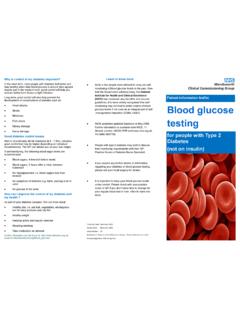

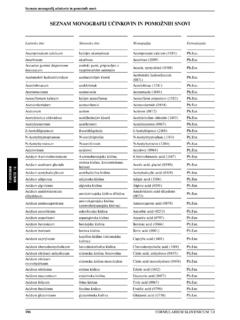
![Pharmacopeial Forum Vol. 35(5) [Sept.–Oct. 2009] …](/cache/preview/4/f/6/4/6/b/d/9/thumb-4f646bd9c98fa61ae166a740ef65637c.jpg)
